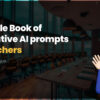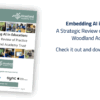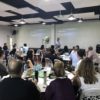
Getting the start of a lesson right is such an important thing. If you don’t switch the students on right away then you can lose them pretty quickly. I’ve written previously about the importance of routines and in that post part of what I was saying was about the importance of meeting and greeting to help set that tone. You can do other things too to help get things right. Literacy and numeracy are both areas which deserve embedding within your lessons too so here are a few ideas on how you might go about doing that so that you can a) set the tone and b) get students thinking, right from the get-go.
IMAGES (LITERACY)
Put an image up on the screen linked to your topic of the lesson asking the questions such as:
- what is your most descriptive word for this image
- given we learn about subject x in this classroom explain what the image might have to do with our subject
IMAGES (NUMERACY)
Put an image up on the screen linked to your topic of the lesson asking;
- where’s the Maths in that?
MUSIC (LITERACY)
With music playing as students enter the classroom, ask students to listen to the sounds; Where are we? What’s happening? What one word would you use to describe the sounds?
MUSIC (NUMERACY)
With instruments (and potential instruments e.g. plastic cups / rubber bands etc) on tables, give students a challenge to use the instruments using no more than 7 sounds, 7 rhyming and 7 syllables per line to explain the concept of….
QUEST (NUMERACY)
Create a code breaker question for students to answer such as one featured here that students have to solve as they enter the classroom. They collect the sheet as they enter the classroom to then solve as they sit down at the start of the lesson.
QUEST (LITERACY)
Blatantly ripped off of Lisa Ashes, create thought bombs with lesson starters on that form a quest or activity linked to the lesson. An example I’ve used is where I’ve filled the bombs with different words from a sentence that form the learning outcome for the lesson. Students who have the bombs have to combine the words contained within to form the sentence that is the learning outcome.
TWEET-BACK (NUMERACY AND LITERACY)
Write a tweet containing no more than 140 characters which summarises the learning from last lesson?
CHALLENGE CARDS (NUMERACY AND LITERACY)
Can you double / triple / halve the words in this sentence and still have the same message? Try asking students to remove every third word from the sentence and describe how its removal changes the meaning and why the word in the sentence was important in the first place. Ask; if you had one eighth of the words would your message be more concentrated and powerful or weaker due to lack of size?
WASHING LINES (LITERACY)
Put up a washing line with key words from the previous lesson attached to it. Each student has to take down a key word attached to that washing line as they come in the classroom with a minute to prepare a response to that key word linked in from the previous lesson’s activities. This could also be saved exit tickets, pegged to the washing line from the previous lesson.
THANKS
Those are just a few thoughts for numeracy and literacy starters for your lessons some of which I must give credit to the lovely Lisa Ashes for, learned through chats and from her excellent blog.
RESOURCES
Also, if you’re looking for somewhere to find some great images such as those mentioned at the beginning of the post, why not look to make your own using Adobe Post (discussed here) or find some great creative commons free images on Pixabay.















One Comment